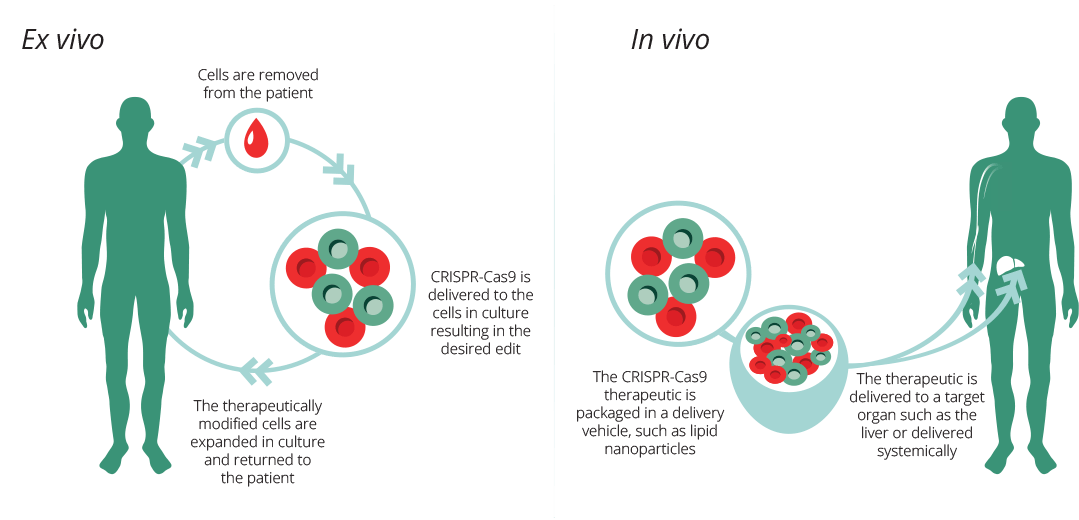To better understand CRISPR-Cas9
|
Video credits: McGovern Institute for Brain Research at MIT
|
In vivo treatments are made by administering CRISPR-CAS9 directly into the human body using a vector (of viral origin, nanoparticles, etc.) to carry the necessary components into target cells.
Ex vivo treatments require the removal of specific cells from the body, editing the gene that's causing the patient's disease and delivering the modified cells back into the patient [2].
Many researchers are currently testing the limits and possibilities of CRISPR-Cas9 using both these techniques [3].
CRISPR-Cas9 is a major discovery in science and can change the future of medicine and pharmaceutics industry.
Sources
- CRISPR THERAPEUTICS. (2015). No Title. Available from: http://crisprtx.com/our-programs/our-pipeline.php
- Savić, N., & Schwank, G. (2015). Advances in therapeutic CRISP_Cas9 genome editing. Translational Research, 168, 15–21. Available from: https://doi.org/10.1016/j.trsl.2015.09.008
- Dai, W.-J., Zhu, L.-Y., Yan, Z.-Y., Xu, Y., Wang, Q.-L., & Lu, X.-J. (2017). CRISPR-Cas9 for in vivo Gene Therapy: Promise and Hurdles. Molecular Therapy - Nucleic Acids, 5. Available from: https://doi.org/10.1038/mtna.2016.58



